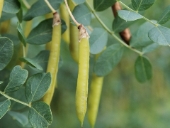
 1
1












 2
2




Some places need to be wild




 1
1




Some places need to be wild
 1
1




Some places need to be wild
 4
4




Moderator, Treatment Free Beekeepers group on Facebook.
https://www.facebook.com/groups/treatmentfreebeekeepers/





 3
3




 3
3




Lizzie Day wrote:As they would be quite crowded they should grow straight up with minimal branching...
Pecan Media: food forestry and forest garden ebooks
Now available: The Native Persimmon (centennial edition)
 2
2




"The rule of no realm is mine. But all worthy things that are in peril as the world now stands, these are my care. And for my part, I shall not wholly fail in my task if anything that passes through this night can still grow fairer or bear fruit and flower again in days to come. For I too am a steward. Did you not know?" Gandolf




Lizzie Day wrote: The seedlings that spring up underneath it each year don't have thorns, although if they didn't get run over by a lawn mower while they're still pretty small, who knows what they might produce? 🤔. I will take that into consideration.

|
What are you doing? You are supposed to be reading this tiny ad!
12 DVDs bundle
https://permies.com/wiki/269050/DVDs-bundle
|




